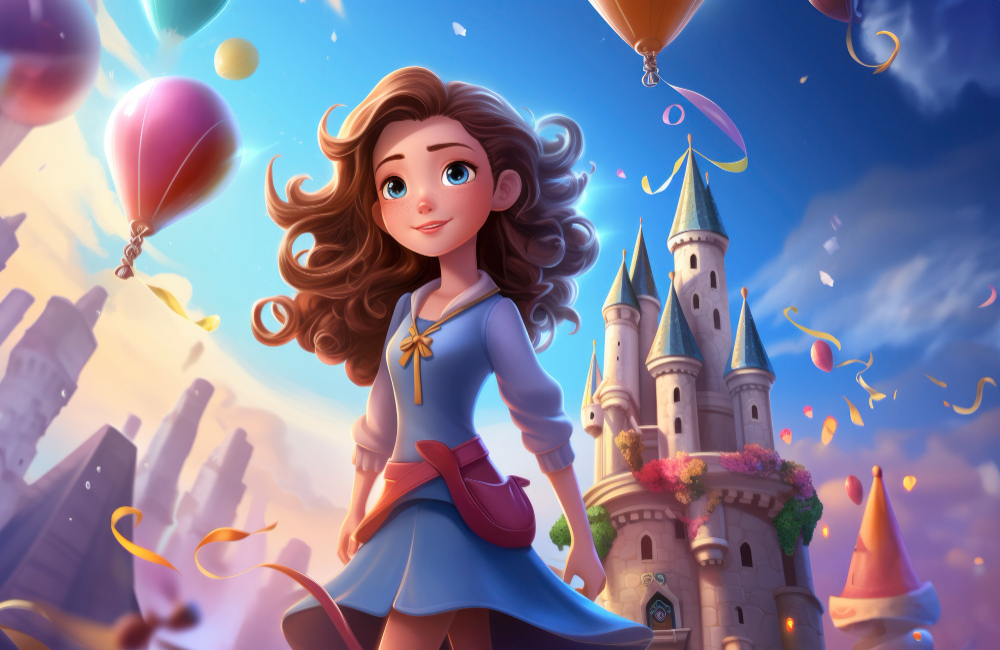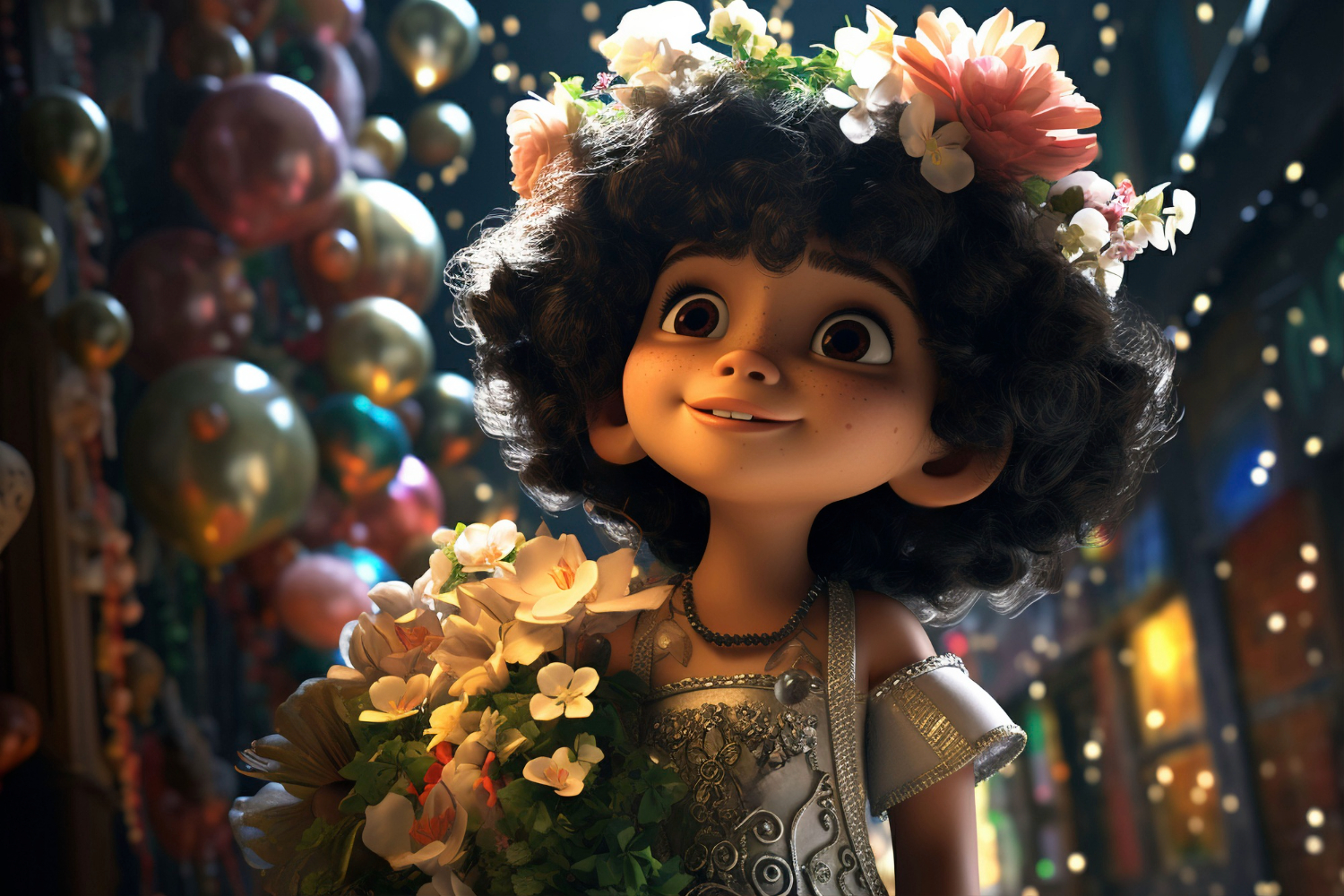In recent years, the field of 3D modeling has witnessed a remarkable transformation, thanks to advancements in technology and the increasing demand for immersive digital experiences. One notable aspect of this evolution is the ability to generate 3D model from photos, a process that opens up new avenues for creativity and practical applications across various industries.
Importance to Generate 3D Model from Photos:
The ability to generate 3D models from photos holds immense significance in diverse fields such as architecture, design, gaming, virtual reality, and e-commerce. This process allows for the creation of highly detailed and accurate digital representations of real-world objects and environments. It enables artists, designers, and businesses to immediately breathe life into their concepts, ideas, prototypes, and products in ways that were previously unimaginable.
Moreover, generating 3D models from photos offers a means to preserve and document physical objects making it invaluable tool for 3D Games. Additionally, for enterprise customers seeking to create innovative solutions to support and enhance their products and services, 3D modeling from photos provides a unique opportunity to differentiate themselves in the market and offer immersive experiences to their audience.
Understanding the Process to Create Unique 3D Models
Steps Involved to Generate 3D Model from Photos
Transforming 2D images into intricate 3D models is a fascinating journey that encompasses various stages, each contributing to the final outcome’s accuracy and quality. Here’s a breakdown of the key steps involved in this transformative process:
Image Acquisition:
Begin by capturing a series of high-resolution images of the subject from different angles. Ensure consistent lighting conditions and create minimal occlusions for optimal photo results.
Preprocessing:
Clean and enhance the raw images to remove any imperfections or distortions. Adjust brightness, contrast, and color balance to standardize the image in ai to set.
Feature Extraction:
Identify distinct features and keypoints within each image that can serve as reference points. Extract relevant geometric and texture information from the images to aid in reconstruction.
Reconstruction:
Utilize photogrammetry or similar techniques to reconstruct the 3D geometry of the object or the subject. Align and stitch together the images to create a coherent and accurate spatial representation.
Post-processing:
Refine the reconstructed model by smoothing out imperfections and optimizing its geometry. Enhance texture details and add surface finishes to improve realism and visual appeal.

Key Tools and Software Used:
In the realm of transforming photographs into captivating 3D models, a suite of sophisticated tools and software stands at the forefront, offering a seamless blend of technological prowess and creative ingenuity. At the heart of this process lie photogrammetry software such as Agisoft Metashape, RealityCapture, and Pix4D, which harness intricate algorithms to meticulously reconstruct 3D models from a series of overlapping images.
These tools meticulously analyze geometric and textural details within the images, resulting in highly accurate and detailed representations. Complementing this, computer-aided design (CAD) software like Autodesk Maya and Blender step in to refine and enhance these models, providing artists with a comprehensive suite of editing and rendering capabilities.
However, the advent of 3DAiLY introduces a groundbreaking approach, seamlessly integrating the power of Gen AI directly into the editing workflow. This innovative platform empowers creators to leverage AI-generated content for crafting unique and high-quality character assets, merging the precision of AI with the boundless creativity of artists.
Additionally, free and specialized plugins and scripts further enhance the functionality of these free and primary tools, automating tasks and expanding capabilities to unlock new realms of possibility. Through the harmonious fusion of technology and creativity, artists can unleash the magic of their imagination and breathe life into their visions, transcending the boundaries of traditional 3D modeling from photos.
Getting Started to Generate 3D Model from Photos
Preparing your photos:
Before embarking on the process of generating 3D models generated from photos, please note that it is essential to ensure that your images are of high quality and suitable for photogrammetric reconstruction. This may involve optimizing the camera settings, ensuring adequate lighting conditions, and capturing multiple angles of the object or subject to capture sufficient detail and texture.
Selecting the right images for 3D modeling:
Not all images are equally suitable for 3D modeling purposes. It is important to carefully curate and select the images that offer the best coverage and perspective of the subject. Images with clear details, minimal occlusions, and consistent lighting are ideal for achieving accurate and realistic 3D reconstructions.
Using text prompts for better results to generate 3D Model from Photos
In the realm of photogrammetry, certain tools offer the option to integrate text prompt or markers into images. These elements serve to enhance the accuracy and alignment of the resulting image to 3D the model. By strategically positioning text prompts within the scene, users can furnish supplementary description text, contextual cues and reference points. Consequently, this aids the software in aligning and stitching the images more precisely and efficiently.
The Conversion Process to Create 3D Model from Image
AI-driven techniques for generating 3D models:
AI-driven methodologies have revolutionized 3D model generation from photos. These techniques employ sophisticated algorithms to convert images into detailed 3D models. Through machine learning and neural networks, AI accurately reconstructs complex objects and scenes, often surpassing traditional methods in efficiency and accuracy. AI can describe images, crop them, and even to create unique 3D models from them, offering a versatile tool for creators. Additionally, AI can apply style and mask to images, further enhancing the modeling.
Industry standard and best practices
In the dynamic landscape of 3D modeling, adhering to industry standards and best practices is paramount. This entails employing reliable software and technologies, including AI 3D, that adhere to established norms and guidelines. By following industry best practices, such as proper image acquisition techniques and meticulous image post-processing, practitioners can ensure the production of high-quality 3D models that meet or exceed industry standards.
Additionally, utilizing AI-driven tools allows for immediate upload and conversion to ai 3d- of images, with trained algorithms capable of accurately describing scenes and dragging them into the 3D space. With just a bit of scrolling, creators can unleash their creativity and seamlessly create 3D models.

Enhancing Quality and Detail to Generate 3D Model from Photos
Editing tools for refining 3D models
Refinement is key to enhancing the quality of 3D models generated from photos. Editing tools within software like Autodesk Maya or Blender enable artists to fine-tune geometry, adjust textures, and optimize overall appearance. These tools empower creators to sculpt, paint, and manipulate models with precision, resulting in polished and visually appealing final products.
Adding texture and details to enhance realism to generate 3D Model from Photos
Texture and detail are vital components in achieving realism in 3D models. By incorporating intricate textures and fine details, artists can imbue their models with a heightened sense of authenticity. Surface imperfections and realistic lighting effects contribute significantly to the depth of their creations. This attention to detail elevates the overall quality of the model, making it more immersive and engaging for viewers.
Paying attention to scale enhances the realism of the object in the model. Consequently, it ensures that it fits seamlessly into the rest of its intended environment and creates a compelling visual narrative.
Best practices for efficient and effective 3D model generation
Efficiency and effectiveness go hand in hand when it comes to 3D model generation. Adopting best practices, such as proper image preparation, utilizing AI-driven techniques, and leveraging efficient software tools, can streamline the workflow and enhance productivity.
Additionally, maintaining a well-organized project team, structure and team and adhering to standardized processes contribute to a smoother and more successful outcome. By focusing on optimizing output, speed, and efficiency, businesses can ensure that teams are well-trained. This approach also helps complete projects in a timely manner, maximizing efficiency and results in their 3D modeling endeavors.
Generate 3D Model from Photos : Business Applications
How enterprise customers can benefit from 3D modeling from photos?
Customers stand to gain significant benefits from integrating 3D modeling from photos into their workflows. Whether in architecture, product design, or marketing, the ability to visualize concepts in 3D enhances communication.
Moreover, visualizing concepts in 3D streamlines decision-making processes and accelerates product development cycles. Additionally, 3D models can be leveraged for virtual prototyping and interactive product showcases. They enhance immersive customer experiences, driving engagement and competitiveness in the marketplace.
Reducing Time-Consuming aspect by Leveraging AI for business
Businesses can leverage AI and technology to streamline operations and enhance efficiency. AI-driven 3D modeling techniques provide remarkable speed, accuracy, and scalability, empowering businesses to tackle intricate challenges confidently. By embracing innovative technologies and nurturing talent, enterprises can remain at the forefront of their industries, ensuring long-term success in today’s digital landscape.
Conclusion
In summary, the journey to generate 3D model from photos encompasses transformative processes and best practices. Leveraging AI-driven techniques, businesses can capitalize on 3D modeling from photos to innovate and achieve objectives. Explore the potential of 3DAiLY to effortlessly generate 3D models from photos and elevate your creative projects to new heights.



